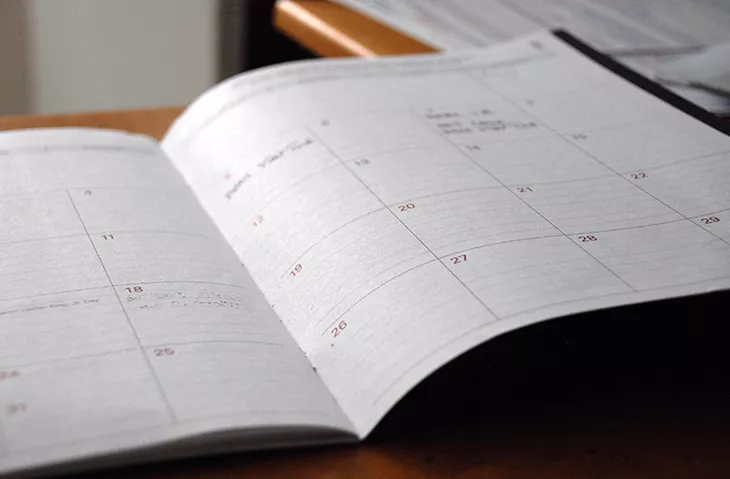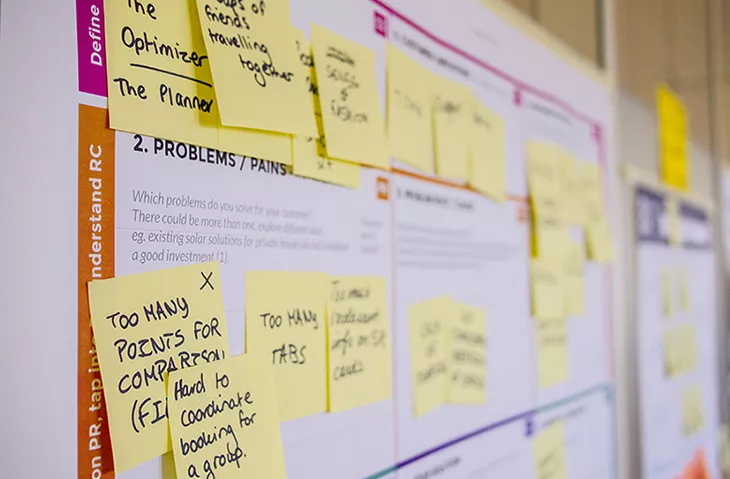How team collaboration plays a role in publishing
There are loads of analogies you can use when talking about team collaboration. Sharing is caring, two heads are better than one, and so on. And while a lot of them are generally regarded as cheesy, they certainly paint a detailed picture when describing the necessity of team collaboration.
Team collaboration is one of those things that one might assume they’re taking part in simply by being part of a team. I can assure you that this is not the case. Team collaboration requires more than just sitting next to one another and occasionally sending GIFs back and forth. It means working efficiently, as one unit towards a common goal.
Effective team collaboration can often be something that is not only mistaken for something else, but overlooked entirely. For that reason, we’re going to go over a few ways you can make team collaboration second nature next time you take on a publishing project.
Team collaboration requires communication
Your life may not depend on your ability to communicate, but the project certainly might. It kind of goes without saying that in order to work well in a team environment, you have to sometimes talk to that team.

All jokes aside, proper communication can easily turn a sticky situation into an easily managed one. On the flip side, poor communication can turn a simple situation into something worthy of a mental breakdown.
For example, one of our latest projects where we looked at Michael Jackson’s history through magazine covers. This entire project wouldn’t have been possible without communicating. It required a lot of collaboration from the content team, designers, and pretty much everyone else.
When it comes to creating a publication like a magazine or even a simple flyer, communication is 100% unavoidable. You have designers, content creators, distributors, and quite a few other people that need to know what’s going on. Constant communication is essential for proper team collaboration in this sense. If one tiny detail is miscommunicated, the whole project can fail.
Here’s the trick: communicate regularly. Yeah, that’s it. Have basic conversations with colleagues and anyone else involved with your project. This will get everyone in the open communication mindset, and they will be much more likely to turn to one another when they need help.
Set times and dates before you even start
It’s safe to say that everyone needs to be on the same page when it comes to deadlines and milestones. Whether you take that literally or figuratively (you know, because we’re talking about publishing a magazine here) is up to you.
In order to ensure absolute team collaboration, you have to make these important dates apparent from the start. Really, the same rings true for just about any detail involving the project. If you fail to bring all the necessary information, including dates, to the table from the get-go, you can very easily end up in a sticky situation.

So, how do we avoid all of this? Whether you’re creating a new magazine issue or starting up a new marketing campaign, the easiest way to get all of the details to the people that need them is to hold a meeting.
Yeah, I know, meetings can be boring, but they are highly necessary. With that in mind, gather all the troops and start discussing the direction you want to take for the latest issue of your highly anticipated magazine. Go over everything from front to back, and make sure nobody has any questions. It’s far better to answer them now, then to wait until it could be too late.
Be accountable
Accountability is an important characteristic in anyone, regardless of whether or not they work closely with a team. But in this case, we are talking about accountability in a closely knit team.
To put this simply, accountability and team collaboration go hand-in-hand. You simply cannot have one without the other. Each and every person on the team is responsible for a certain role. If they cannot be relied on to fill that role, or if that role isn’t clearly defined for them, it could result in disaster.
The easiest fix for this is something very similar to the previous point. Define the roles of each person on the team, set tasks, get all your ducks in a row, and then collaborate. If even just one person is confused about the role they play, then the entire team can suffer.
Encourage engagement
Engagement is a vital part of any project. Team collaboration basically relies on it. Ok, maybe team collaboration relies on a lot of things, but this one is definitely at the top of the list.
If you have spare time, or you notice that someone might need help, you should never be afraid to engage. The same goes for the people that need help. If you have questions or you just need some extra assistance, speaking up could literally save the project.

This point kind of goes along with the accountability point above. The best way to make sure that everyone is engaged in team collaboration is to ensure that everyone knows their role. Otherwise, you just have a giant mess of people wandering around, looking for things to do, without any real direction.
On the flip side of things, if everyone is clear about everyone else’s role in the team, then finding help will be much easier, too. If you’re having issues, ideally you should know exactly who to go to in order to get help. Be engaging!
The advantages of effective team collaboration
Ok, so we’ve talked about some of the important points in executing proper team collaboration, so now let’s talk about the benefits it can produce in regards to creating a publication like a magazine.

To be honest, there are lots of benefits. Some of them may be a little obvious, but they’re still worth mentioning. So, let’s list them one at a time:
- Efficiency
When you really think about it, a team working together definitely makes for a more efficient work experience. After all, like I said at the beginning, two hands are always better than one.
- Satisfaction
This is one of the ones that may not be so obvious. Effective team collaboration will always lead to employee satisfaction. Knowing that you have a team you can rely on and get along with does wonders for morale.
- More creative ideas
Everyone has a different way of doing things. This may sound like a bad thing, but as long as everyone can find a middle ground, it’s an incredibly useful thing. If everyone thought and acted the same way, the world would be quite a boring place. Luckily, we don’t all function that way.
With that in mind, the work you and your team produces should reflect that. You will involuntarily attract a variety of different people, and the publication will only benefit from it.
- Productivity
There are many ways you can increase individual productivity, but team collaboration has proven to be one of the leading methods.
Believe it or not, a study produced by Mckinsey & Company showed that effective team collaboration resulted in a 20-30% productivity increase in individual team members. In short, helping team members and collaborating properly helps out in more ways than just one.
How to best practice team collaboration
Again, there may be a few obvious things that pop into your head when you read the header above. But, really and truly, sometimes people just overlook a few small details. So here are a few ways you can constantly seek to improve your team collaboration:
- Be a leader
Leading by example is one of the most effective methods to accomplish anything. We’ve all been taught this since childhood, and the lesson still helps us to this day. The absolute best way to get you and your team collaborating like clockwork is to step up to the plate. Others will follow.
Giving everyone a goal to work towards will surely get a collaborative reaction. It’s a simple and effective way to get everyone working together, whether they realize it or not.
- Brainstorm together
One of the best ways to not only get your team collaboration on point, but to get great ideas for your publication flowing, is to brainstorm together. Quick brainstorming sessions are powerful tools that can produce incredible results.

Start collaborating!
I hope you’ve learned something new today. To summarize everything above: team collaboration requires a lot of work. It’s not every day that you can throw a group of people from all walks of life together, and get them to collaborate flawlessly. You have to work hard at it, understand the goals and threats to those goals. You have to celebrate together, and learn from mistakes together. Get to know one another, and become more than just a 9 to 5 workforce. Become a team that people use as an example.
To really get the teamwork rolling, try creating a magazine mockup or flatplan. This will cause your team to work together and come up with creative ideas.
Additionally, don’t forget to check out Flipsnack’s typography feature. it makes collaborating within a publishing team so much easier.
So there you have it. Team collaboration is a vital part of any team, remote or office-based. It is the driving force behind any successful operation. Once you have team collaboration mastered, your projects will thrive.



